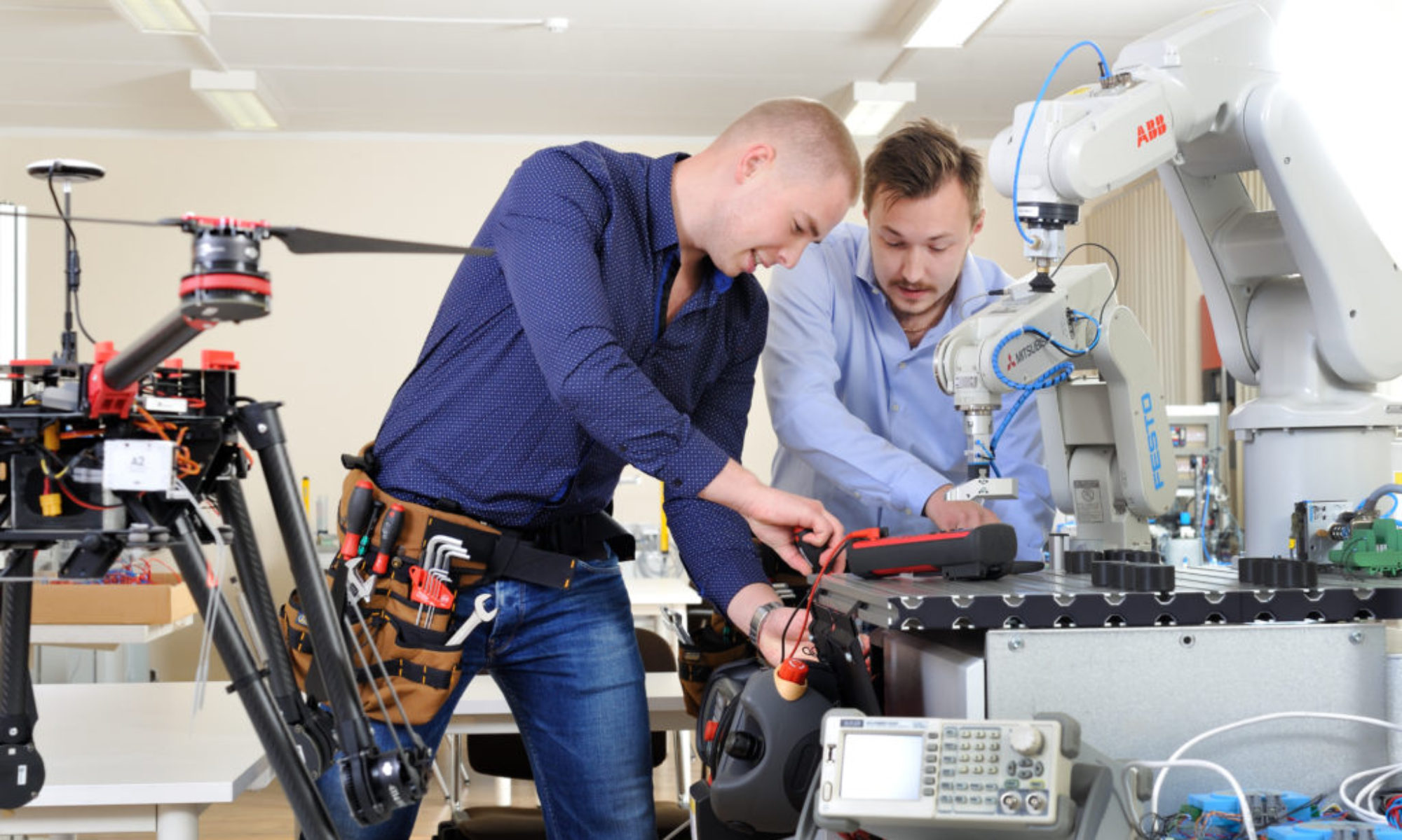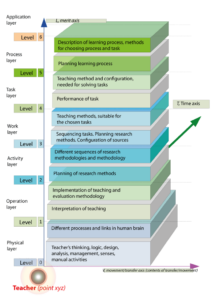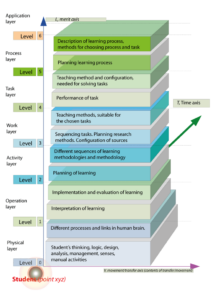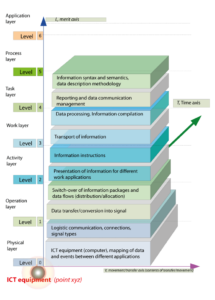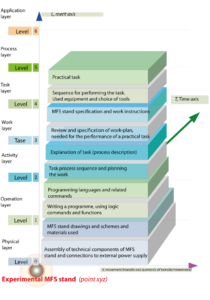Ontology of Information, Presented to Subjects, Participating in Learning and Teaching
Headline Idea of Six Dimensional Co-ordinate System
The transferred material contents of relations that emerge in people, machines and the space between them has a complicated nature. Complicacy is also reflected in structure of descriptions (or information) of semantic nature. Organisation and realisation are quite clearly distinguished in the structure of wholesome information, whereas architecture is also present in both. Components of real or working entities and links between them for information flow (or contents) are described together and visualised, using topological schemes. In descriptions of real or working entities, models and systems theories, organisation and realisation and organisational architecture and realisation architecture are, in essence, different yet still intertwined elements. When giving technical education to learners, a lecturer will communicate and present information to describe material components, limited to a certain system. The other part of the information, communicated to students, represents semantic movement that is realised in internal or mutual links of their components.
One of the important definitions that will help us to describe theoretic, modelled and real objects and semantic movement between them, is the dimension of a space (or a scope). There are many references, explaining the definition of a dimension. Physicists have played an important role in providing better understanding of dimensions and shaping the perception of us, subjects, of time-domain and material objects.
Semantic modelling of a dimension of relatively general nature will result in specific objects or coordinate axes that the subjects can use to measure properties of components of interest and different parameters of their movement. Co-ordinate system or a spatial object, drawn up, using lines that intersect in the same point, can be used for the purposes of visual comparison. Physical co-ordinate system can be used as reference object for measurements. [123].
René Descartes used visual object, consisting of straight lines that intersect and cross with respect to each other (x-, y- and z-axes) to model geometric objects within a geographic space. Using one’s eyes, people see geometric objects that surround him/her within a three dimensional (geographic) space.
In 1843, William R. Hamilton, a mathematician, started to use a four-dimensional model of time-domain [124]. Fundamental constant c (speed of light) will allow users to geometrise time (ct) and thus make the dimension more visual. Length of time is visualised on diagrams, using a straight line; it’s length is determined by initial and final time values. Geometrisation does not mean that the definition of time will become geometric. Standardised time-domain co-ordinate system is today used to identify and determine the value of any simple or complicated object. Motional content of the object cant be measured using only time and geographic axes. Also content etalons are needed
The movement (properties) of entities us are not geometric by nature. We must use the definition of multi-dimensional space to help us understand organisation and realisation of semantic movement.
Scientists have been waiting for a new dimension to be added to theory of general relativity since 1920, when Theodor Kaluza and Oskar Klein first recommended a theory of relativity that included a fifth dimension. The modern theory is well acquainted – and acknowledges – the concept of multi-dimensional space and even elementary particles not being just points, but instead, elements that may consists of very small strings [133]. At the moment, Space-Time-Matter theory with its extra fifth dimension is being studied; this was first suggested by S. Wesson and his colleagues. According to this theory, all material fields exist in fifth dimension and can be transferred through vacuum of large dimensions [128], [123]. Attempts have been made to link time-domain and realistic phenomena of electro-magnetism, using the fifth dimension [134], [124].
Spatial information that our senses provide allows our brain to visualise the composition of geometric objects and sense their relations (topology), however, we can’t yet determine the value of time, the value of all the different properties of movement observed (quantity of contents) and the value of such properties (quality).
Geometric subject and object, expressed within a geographic space, and their components are visualised by points and their topological relations – as pairs of points that have been attributed specific co-ordinates, which are obtained by measuring, involving co-ordinate system. Topological links between geographic points of subject and object (or resources) is described on Figure 6.1 [56]. At least two connections are to be used to obtain a topological relation.
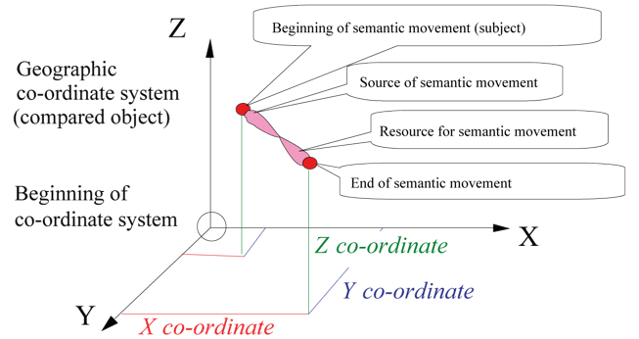
Figure 6.1 Group of geographic axis and logical substance of the term “movement” [56]
By using sight and sense of time, people will add dimension of time to geographic space. Visualisation of systems of five and more dimensions that are mostly mathematical and even more complex and complicated is quite difficult for an untrained learner.
The unsolved problem of modern education involves insufficiently defined visualisation and therefore, technical design specialists are taught to use, mostly, the four main known dimensions both for measuring, describing or synthesising the composition of subjects and objects and semantic movement. The four main dimensions are also used to describe the quality of movement that takes place in relations between objects. The use of such a methods will often result in long and clumsy descriptions.
It is said that a single good picture can convey more information on movement that an thousand words. People perceive the composition of world in forms and shapes, adding images to pictures and three-dimensional geometric shapes in their minds. Topological relations between a geometric system, theory, model, subject, object and their different parts (e.g. points) is described at schools, using the x, y, z axes that have been known for centuries.
Ines and arrows that serve to describe the nature of movement – at least to a certain extent – are used to visualise relations between points and the movement that takes place within such points. Such a three-dimensional (geometric) image will convey the nature of movement of an object, but not very accurately. Lines represent movement that remains, in fact, outside geographic space. The substance of an object moves within a space in a way more disperse and complicated that the points and lines can show for our eyes. Transformation of the movement that takes place (changes in quality of substance) is usually explained in teaching materials, using separate mathematic symbols and formulae.
As the scope of information technology expands and it us used, more and more, for giving education, we need better architectural methods and tools to ensure better understanding of information available as the volumes and complicacy level of information communicated changes. New methods for structuring should also allow to geometrise the values of time movement contents and complicated, dispersed semantic (intertwined) transformations. New software tools should help to make movement more visual in descriptions, available to subjects.
Complicacy of the movement that takes place within a system, theory, model, object, subject and their mutual relations – usually not grasped by the senses and untrained brain of a student – could be described with a co-ordinate system, developed, using completely new implementation of dimensions. The new triplet of implementation axes, made up of visually intersecting lines, is depicted on Figure 6.2.

Figure 6.2 Group of implementation axes [56]
In the sphere of education, there us no widely acknowledged training or technical engineering science and engineering education methodology that would rely, for example, on six main dimensions.
Semantic parameters of a geometric object are expressed in geographic points. To describe the movement within a relationship, connecting two points (quantity of semantic properties), the contents of the axis (communication) of a new implementation co-ordinate system will be oriented to pass through the start and end point of the relationship observed. Let’s now imagine that the geographic space that we all know becomes a sub-space of a new implementation space. A student, in control and using a six-dimensional (6D) spatial model can express (geometrise, visualise), apart different geographic (geometric) points also the time of implementation, quantity of different parameters of movement and the different qualities of the different parameters. Therefore, s/he can think in six dimensions, without any difficulties. Visual description of six-dimensional movement is illustrated on Figure 6.3.
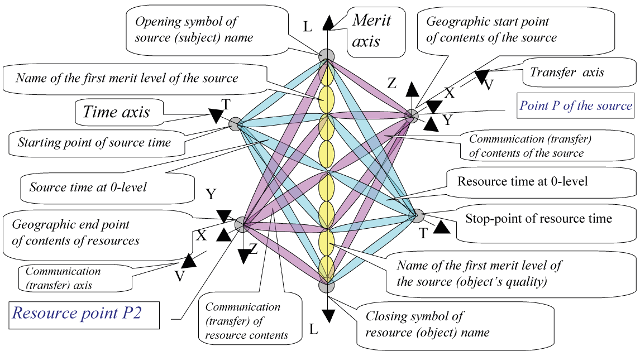
Figure 6.3 Visual description of a complex semantic movement within 6D-space [56]
Quite probably we’re already using a six-dimensional spatial model to describe the composition and implementation of complicated objects on daily bases, but we won’t notice this or pay it any attention as we’ve been nought taught to see a six-dimensional space.
In the sphere of education, a more general method of explanation will be needed for providing effective description of the organisation of material entities and implementation (realisation). The new, six-dimensional space and an appropriate visualisation method will allow us to use the data modelling opportunities and tools, created in information era [56]. The theory of a six-dimensional space is ontology, as this is based on observation and measuring of the movement of real life objects and subjects and facts, recorded in writing.
This doctoral thesis employs the aforementioned six-dimensional spatial model and implementation ontology, suggested as a novelty, for the purposes of visual description of semantic movement between entrepreneurs, employees and their tools and students acquiring education and their technical objects within the qualification system (where education and vocational system functions). This can be used not only to visualise geographic objects but also to geometrise the movement within objects and relationships between them, time of movement, values of parameters of contents transferred and value of properties, involved in the architecture of movement. As the value of transferred contents (parameters) or quality is submitted for perception and also visualised, using words, the new merit axis differs from the standard numeric axis by the divisions not marked with numbers, but names instead.
The following paragraphs and sections provide a short description of the six-dimensional spatial model and explanation of its possible ways of use for the purposes of development of visual teaching materials.
6.1.1 Definition of Co-ordinate System (Framework)
The definitions that are used for descriptive purposes are complicated in essence and they also have a structure. According to picture theory of Ludwig Wittgenstein, objects in pictures are recognised by people if they have identical “logical” shapes with real objects [125].
The example of movement, taking place in a six-dimensional space, depicted on Figure 6.3 can be used as the bases for visual description of movement between specific subjects and objects or parts thereof (for example, geographic points).
Implementation of mutually linked objects or semantic phenomena is usually scattered within space. Specific communication values are obtained, within different time intervals, for every parameter of different quality, in the are of movement that takes place by points of a geographic space. The better we distinguish parameters of objects (different quality of contents), the more intelligent we are. Reference object, called merit axis, can be used to distinguish and measure the quality of contents of subject. Name of the parameter is obtained as measuring result. More specific structure of merit axis and one specific ontology is visualised in Figure 6.4.
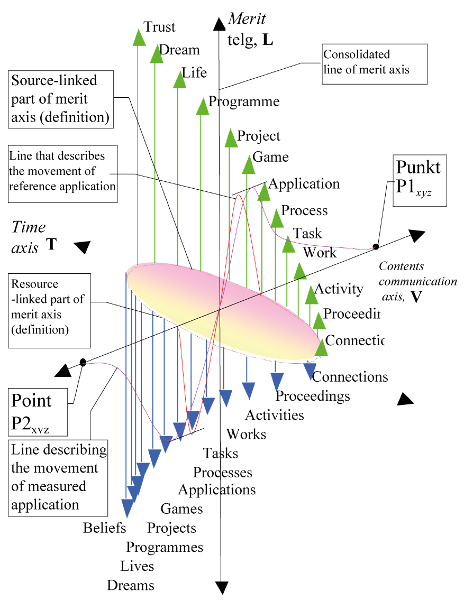
Figure 6.4 Structure and architecture of the value axis concept [56]
For example, a smart power grid can be imagined as an information-wise, energetically and massively implemented cluster. Such a power cluster has generators (sources) and distribution lines at the supply side and connection lines and loads (resources) at the demand side. Smart energy meters that measure the quantity of contents of movement will be installed between (into connecting points) of power suppliers and consumers. Values of different informational and electric parameters can be measured, for example, current, voltage, power, energy, price of one kilowatt hour and incurrence of failures. The visual ontology of merit axis (quality axis) of the implementation framework will determine different electric parameters (marked with different names) at different merit levels.
Merit axis can be integrate into a co-ordinate system that can be used, for example, to model power distribution networks or complex automated production equipment. Such an integrated development, design or simulation environment not only contributes to navigation within definitions discussed (including subjects and objects), but will also help to understand the structure of dynamics of the system. It is useful to implement the suggested architecture to simplify learning and to contribute to economic and safety-related performance [75].
6.1.2 Description of Implementation in Symbols
People use he language of symbols to sense/perceive the existing realism as a six-dimensional space. One of the reasons why people use the language of symbols is the need to explain why is the movement of an object present in so many different forms (different activities, proceedings, parameters) and why does the value of a parameter emerge in that very moment and such a geographic place.
Many people (including students) are subconsciously using different words (different symbolic values) to describe quality in complicated everyday situations, also some (merit) dimensions. However, they’re clearly/obviously not informed of 6D space ontology (typical model) and as the consequence they use the same applied terms and definitions differently in different situations. Therefore, they lack an agreed hierarchy of applied terms to describe the implementation of something (an object) and, in general, to ensure similar thinking with other people.
Technical text with a meaning (as a subject) that describes the implementation of some object will also explain the names that are needed to obtain qualitative values of parameters of movement (or assumes the presence of hierarchy with names).
In the 6D framework observed, focus is on both the movement of material and substance (geographic communication of contents) and also the quantitative values of qualitative parameters. Quantitative values of content communication can’t be separated from the description of the rest of the system. Quantitative value of each parameter will be measured, using the appropriate (mentioned, referred) standard.
Merit axis can be used to describe definitions, keeping the following on mind:
- Merit axis can be differentiated, implementation quality can be described (geometrised) as many visual layers with different names;
- The basic point of 6D framework is hidden into the depths of substance;
- Deep structure of subject and all the basic activities involved are unknown for modern physicists;
- Human brain can sense the dimension of merit and is capable of creating mental systems, involving values of both physical, energetic, informational and dream quality, using it;
- Life cycle is the name of a high quality concept, model or physical body.
6.2 Description of Learning Process, Using 6D Spatial Model
Development of knowledge and creativity can be expressed by integrating spaces of two different type. These two types are geographic and implementation space. Geographic space is a sub-space (distillate) of implementation place. It’s static by nature. Movement is implemented by spatial connections that exist between subject and object or, if we adjust the definition, between sources and resources.
It is often difficult to understand the contents of teaching materials of technical subjects (e.g. automation). In cases like that, learning should be structure, using the 6D co-ordinate system. 6D system is mentally perceived, visually displayed and also an object that can be related to reality, helping to describe and integrate not only geographic properties, but also descriptions of implementation (interactions).
Modern approach to learning includes the acquisition of knowledge and skills as an interaction or complex process. Competence of students is developed by applying universal main principles in practice.
The most important parameters of occupational competence of industrial automation specialist and mechatronic are given below:
- Creativity – cognitive activity of students, analysis of technical information, formulation and fundamental/basic solving of new problems in the sphere of automation;
- Innovation and efficiency – successful implementation of outcomes of creativity by means of professional activities in both personal life and in enterprise;
- Mobility – willingness to enhance the level of existing/current knowledge and experiences to adapt them to changing economic conditions;
- Perspective/prospects – willingness to continue education, self-improvement, professional and personal development.
Blended learning is the most appropriate learning methods for the implementation of these objectives. From today’s point of view, blended learning is based on en effective “mix” of traditional and distance learning technologies and innovative pedagogic teaching methods. In the information era, employees, involved in production of products, are taking part in in-service training on regular bases. This means that people will need different educational tools (resources, equipment/supplies) and their distribution systems and also a common platform for communication and co-operation [129].
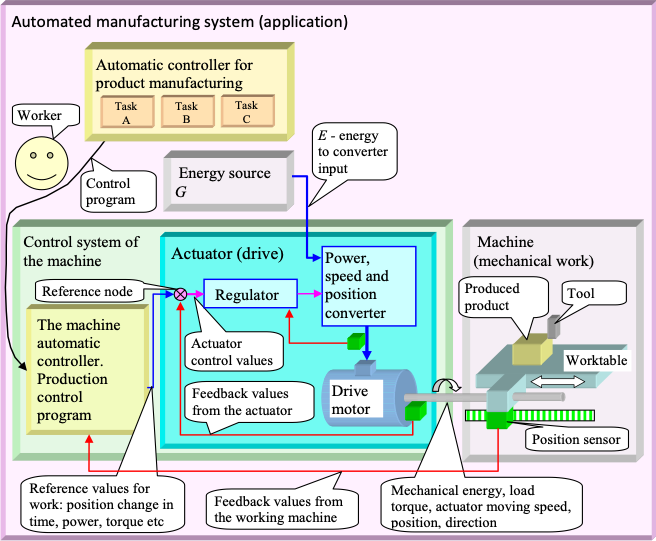
Definitions/concepts, used for the purposes of contents of education, are structured. For example, Joonis 6.5 depicts a scheme of general structure of automated production systems that can be used as teaching material [135]. Innovative developers will use information, energy and physical/material production technologies with modern development methods for the creation of an automated production system. People, automated control systems and controlled energy device/equipment (mechanic, in part) will be integrated during system development. New production equipment will allow to manufacture more complex products during a shorter period of time. The innovative technologies, used to manufacture the products, will also become more complex.
Modern approach to learning and teaching employs existing and newly emerging teaching methods, but official/formal language and related terminology is often forgotten. Mastering a language represents an abstract process which is used by teachers and students to acquire the ability to perceive and understand information and also to produce and consume words or symbols of some other type to communicate with each other. Material contents move, for the subject, expressing illustratively, behind the symbols. The contents are located in the space between objects and subjects, not in their respective geographic points. The use of language in different situations requires for teachers and students to adopt new and different tools and methods. Tools often contain syntax analysers that do not consider the meaning of words used and semantic analysers that will attach interpreted meaning to the symbols of formal language. These tools are all used in combination, for example, a symbolic expression will represent, in reality, the quality or quantity of contents or time values.
Joonis 6.6 represents a three-dimensional (3D) view of syntactic units that are organised around formal language. We should understand that terms (and expressions) of formal language represent specific semantic value that is called “quality”. Values of symbolic terms are different. Therefore, we need a new dimension to define the value of quality of symbolic contents.
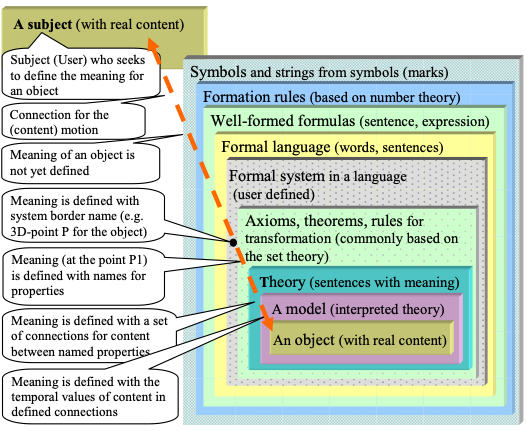
Figure 6.6 Organisation of syntactic units; top quality level of formal unit is an example/model [56]
Theory represents a formal system that includes a set of sentences in a formal language. Scientists work with formal/official theories. Scientific theories are usually more complicated that laws or regulations.
Theories have many parts and they will probably change as developing science will make new data and analytical tools available on regular bases. Real experiments are used to prove theoretic thesis (statements. Theory is a tool of science. Scientists or other subjects – like students – will “view” objects of interests through “glasses of theory”. The viewer is linked to units of real material by means of symbolic units. The structure of a formal mask is visualised on Joonis 6.6. Joonis 6.7 depicts a scientists who views real object of interest through syntactic unit („3 D formal mask“).
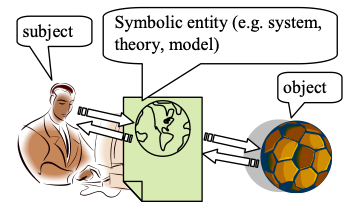
Figure 6.7 Formal theory is a “semi-transparent symbolic mask“ [56]
Well-known theoretical system, based on five axioms, is, for example, the Euclidian geometry. According to a method, resembling Euclidian, each and every scientific theory involves a set of semantic concepts and statements that are true or assumed to be true. Meta-physical theory is more restricted, i.e. less things are possible meta-physically, than logically possible. Meta-physical theory can reflect some of the (deep) facts about the worlds, being the foundation of knowledge. Such an accurate relation to physics and physical abilities is an issue of discussion between teacher and students.
According to the definition, 3D geographic space represents a sub-space of a six-dimensional (6D) space. More complex movement becomes obvious, for the viewer, as a geometric object in a geographic space. 3D points specify (quantify) interminable number of small (condensed) locations within the 6D space where movement exists. The reason of movement always lies beyond these 3D points.
6.3 Description of Learning Methods, Using the Framework of Six-dimensional Space Framework
We could view learning as an interactive movement that includes information exchange between student and teacher by a diversified visual interface between learning tools, for example, using the Moodle user interface. During the dialogue, student and teacher will be linked by different channels (see system 1, Figure 6.8) that can communicate values also at higher quality levels. Skilful teacher can convey his/her practical skills, using system 2 user interface (Figure 6.8) and channels that formed values at lower levels.
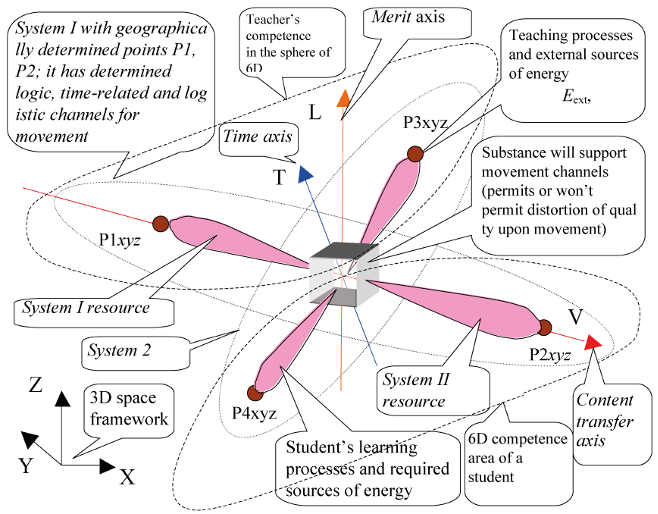
Figure 6.8 Dialogue between student (P1 system 1) and teacher (P2 system 1) also involves teaching and learning tools [56]
According to implementation ontology, quality is determined for resource-based measured physical, energetic or some other qualitative value, i.e. something with a name value. Communication value and realisation time can be also determined for this value.
Geographic points can be linked to components of hierarchic composition that will jointly form a working system, for example, element, component and module. Element is a so-called “black box”. This consists of at least two points (every one of them contains substance), two internal connections and a certain quantity of working substance around them. Substance will transform unknown movement that are not a part of the system (Figure 6.9).
If we were to study teaching and learning more specifically (systematically), we have to present the merit values of learning process subjects on axes more accurately (teacher Figure 6.10, student Figure 6.11, ICT solutions Figure 6.12, practical tools Figure 6.13 and e-learning environment Figure 6.14). The values of substance, communicated between parties, should ideally allow immediate synchronisation with each other. In real learning process, these subjects are working at different moments of time. Therefore, intermediate recording devices are needed. Communication transfer will also largely depend on dynamics of learning process dialogue and its components.
Figure 6.9 Illustration of six-dimensional space framework [56]
Figure 6.10 Teacher’s value axis [74]Figure 6.11 Student’s value axis [74]
Figure 6.12 ICT value axis [74] Figure 6.13 Experimental stand (MFS) value axis [74]
Figure 6.14 E-learning value axis [75]
6.4 Summary
This chapter provided a visual description of teaching-learning systems of a school, using a 6D co-ordinate system, involving integration of students, computer, e-learning environment, multifunctional production automation experimental MFS stand and applications, used by teacher in learning process, for the acquisition of education.
The 6D space concept is used as a part of education technology to explain, effectively, the informative and energetic interactions in a communication process between teachers and students. The structure can be used to describe different equipment that are used in industrial automation and mechatronics.
Innovative 6D thinking methods will help teachers and students to organise/structure their knowledge more efficiently, contributes to teaching and learning value factor and accelerates adaptation with rapid changes that take place in labour market.
Main views for the performance (implementation) of dynamic were explained, illustrated and presented visually, using the new 6D co-ordinate system.
The new 6D co-ordinate system is implemented into descriptions of learning system that vocational education students (students of technical specialities can use in due course of theoretical training and practical work in the field of industrial automation and mechatronics.
Teaching and learning process can be grouped and defined to different value levels in accordance with the presented 6D space architectural model.
